Solar Eclipse of the Sun 2024- NYC
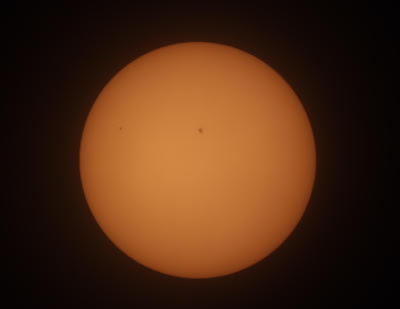
Above: Sun before eclipse starts --Note: a few sunspots are visible
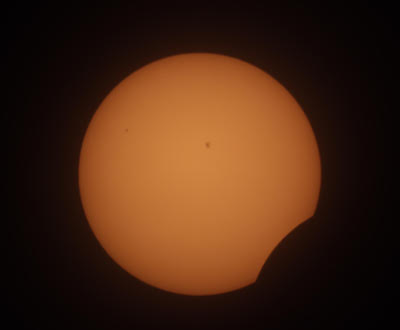
Above: Beginning of eclipse
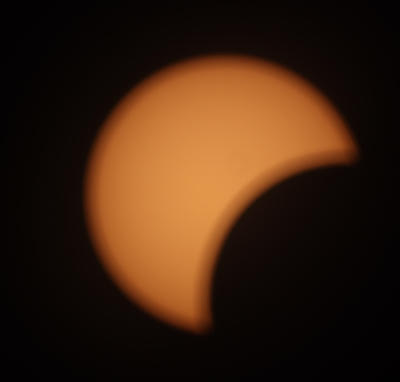
Above: Continues with some hazines as cloud coverage increases
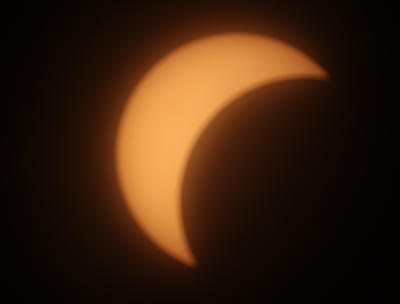
Above:: About half the sun is now covered by the moon
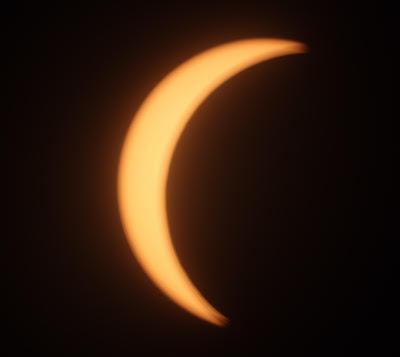
Above: Close to Maximum Coverage by Moon during Solar Eclipse in NYC April 8,2024
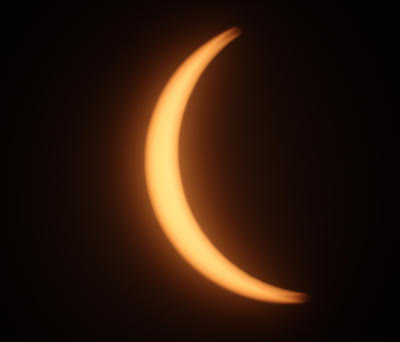
Above: Maximum Coverage by Moon during Solar Eclipse in NYC April 8,2024
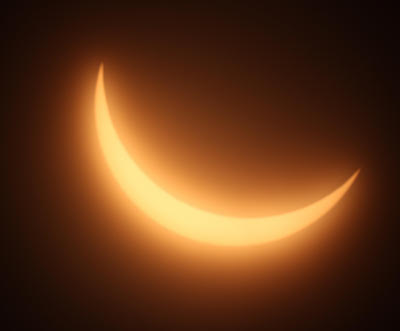
Above: Moon starts to pull away
About the Sun
Never look directly at the Sun
- Light from the sun takes 8 minutes to reach us.
- Every second, the Sun turns over 4 million
- If you looked at the Sun in a telescope, you could blind yourself.
- The surface of the Sun is 150,000,000 km (93 million miles) away
- Every second, the Sun turns over 4 million metric tons of gas into energy.
- The Sun is as wide as 109 Earths.
- The Sun is gas. You would fall in.
- The Sun is hot (5,500 °C or 9,900 °F). You would burn up.
What is the Sun?
The Sun is a star -- ”the closest one to Earth. It is a large ball of very hot gas. The air we breathe and the helium in a balloon are both gases. The Sun is very hot. It is over 5,000 °F at the surface, and much hotter at the center. The Sun is made of mostly hydrogen (70%) and helium (28%). It turns more hydrogen into helium every second.
The Sun makes light and heat that warms the surface of the Earth and makes plants grow. We can get food from plants, and we can burn wood and other parts of plants to cook, warm our houses, and make cars go. Without the Sun there would be no life on Earth.
How big is the Sun?
The Sun is very big - much, MUCH bigger than the Earth! It is more than a million kilometers or 109 Earths across and contains more than 99.9% of the Solar System's mass. If you could stand on the surface of the Sun, you would weigh 28 times as much as you do on Earth because the Sun is so big.
More than a million Earths could fit beneath the surface of the Sun! It doesn't look that big from Earth, though. That's because the Sun is so far away. Compared to other stars, the Sun is about average-sized.
The entire Solar System is inside the atmosphere of the Sun. A very thin solar wind of gases blows from the Sun all the way to the edge of the Solar System, until it hits the wind between the stars.
What are Sunspots
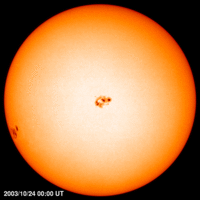
Dark areas are sunspots
Sunspots look like dark spots on the Sun. But they are still bright — brighter than lightning. They are a little cooler, too. But they are still hot — about 2000 °C (3600 °F). Spots are caused by changes in the Sun's magnetic field, and usually form in groups which are carried around the Sun as it rotates.
The number of sunspots we see goes up and down every 11 years. Sometimes, prominences and solar flares form in or near sunspots.
What is the solar atmosphere like?
Above the photosphere, the Sun’s gases are not very dense at all. There are two layers that we can see with special telescopes. Above that, gases stream out as solar wind that reaches to the edge of the Solar System.
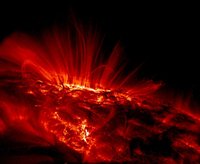
Prominences and solar flares
If you have a telescope with special filters, you can see bumps around the edge of the Sun. Each one of these is called a prominence. They look like volcanoes erupting. They are hundreds or thousands of kilometers long. Some are bigger than the Earth. They often seem to come from sunspots. Sometimes they get so far away from the Sun that they fly away from it. Then they are called solar flares.
Chromosphere
Chromosphere means "color ball". It is just above the photosphere. It is not as bright as the photosphere, and you can’t normally see it. But you can see it just before a solar eclipse (only with special filters!). It looks like a flash of all the colors of light.
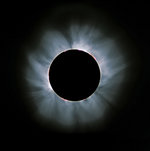
Solar Eclipse
Solar eclipses occur when the moon passes in between the Earth and the Sun.
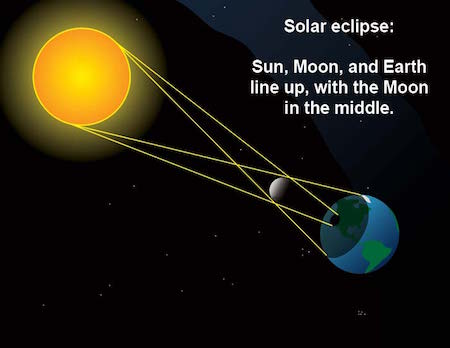
Above image courtesy of weather.com
Solar System
- Table of Contents
- Introduction
- About the Solar System
- The Sun
- Mercury
- Venus
- Earth
- Moon
- Mars
- Asteroid belt
- Jupiter
- Saturn
- Uranus
- Neptune
- Pluto
- Comets
- Kuiper Belt
- Oort Cloud
- How the Solar System was born
- What will happen to the Solar System in the future
- Solar System/Space exploration
- Glossary
Beyond The Solar System
Earth Systems
- Layers of the Earth -- What are the different types of Seismic Waves
- What causes precipitation? What causes it to rain or snow? What causes dew on the ground?
- What is the Coriolis Effect?
- About gravity, mass, and weight
- What are seismic waves? What are the different types of seismic waves?
- What is Humidity? How is Humidity Measured?
- What causes precipitation --( rain or snow)?